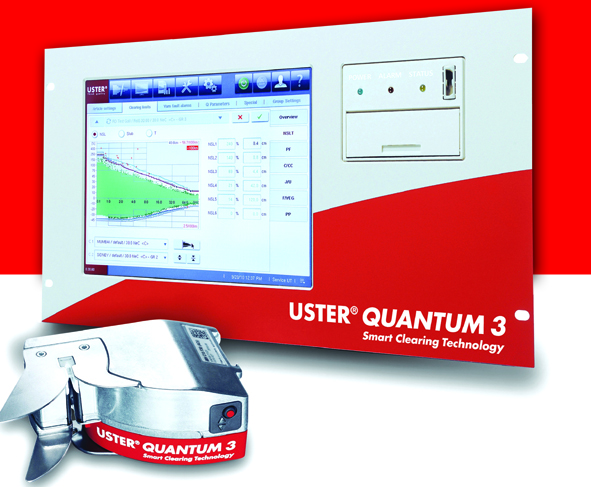 The target with clearing limits for yarn clearers is to remove disturbing faults (outliers) without touching frequently-occurring events, which is defined as the ‘yarn body’. These frequently occurring events do not represent faults and therefore normally do not have to be cut. Conventional clearers used the so-called “class clearing” and/or “channel clearing” to reach this objective. Both methods are less effective since they could either leave disturbing faults in or result in too many unjustified cuts mainly because the yarn body was difficult to monitor and display.
The target with clearing limits for yarn clearers is to remove disturbing faults (outliers) without touching frequently-occurring events, which is defined as the ‘yarn body’. These frequently occurring events do not represent faults and therefore normally do not have to be cut. Conventional clearers used the so-called “class clearing” and/or “channel clearing” to reach this objective. Both methods are less effective since they could either leave disturbing faults in or result in too many unjustified cuts mainly because the yarn body was difficult to monitor and display.
The USTER QUANTUM 2 CAY (computer-aided yarn clearing) was a major step towards identifying the yarn body and defining limits based on the yarn body. Now, thanks to the powerful new sensor and processing electronics in the innovative USTER QUANTUM 3, the yarn body is finally visible. For the first time ever, smart technology enables it to analyze and ‘capture’ the yarn body after less than two minutes of running yarn through the clearer.
For spinners, the benefits are instant. Firstly, the task of defining the right clearing limits is dramatically shortened and simplified, since the boundary of the yarn body is visible in real-time on the display. Secondly, clearing limits can follow the boundary of the yarn body and prevent outlier thick and thin places from getting into the final fabric resulting in consistent quality. Thirdly, the yarn body visualization also prevents the setting of clearing limits which would cause unnecessary cuts in the yarn body area to remove defects which are not disturbing. As well as reducing winding productivity, such cuts require additional splices that could lead to breaks during weaving. Therefore the system maximizes the yield.
In other words, thanks to the revolutionary yarn body visualization, clearing limits are optimized for both quality and productivity!
The yarn body representation with the USTER QUANTUM 3 also reflects the raw material, spinning process, spinning elements settings and yarn count. Therefore, yarn body profiles are unique to each yarn article, which is also why in practice every mill has limits optimized to its own conditions. For instance, the yarn body of a compact yarn spun from cotton from one region is different from that of a similar yarn made from cotton from a different region. Similarly, the yarn body of a carded yarn is different from that of a combed yarn.
In conclusion, the concept of yarn body-based clearing gives a higher degree of quality assurance than ever before, as well as being suitable for all types of applications. From a textile technology point of view, this is a major breakthrough, especially as the yarn body represents raw material, process and count.
This makes it possible to establish patterns based on experience and ultimately to correlate patterns so that changes in raw material or process can be identified.